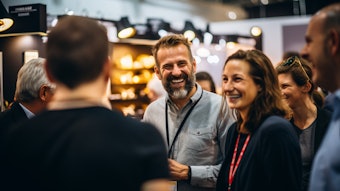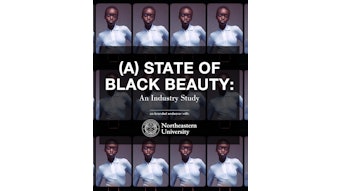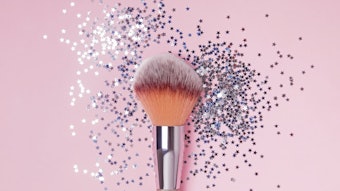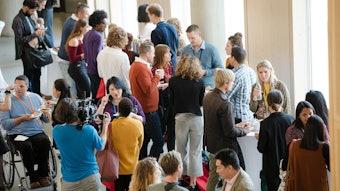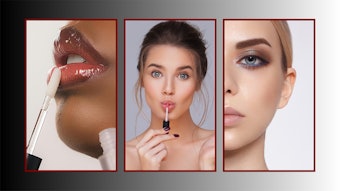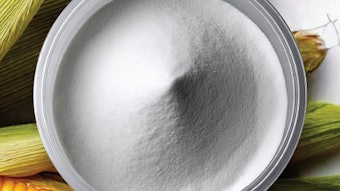The Fashion Group International hosted its "Beauty’s Luxury Lift-off" Beauty Symposium on April 24, 2013, featuring a distinguished panel of industry executives weighing in on what it means to be a luxury brand. President of The Luxury Marketing Council, Greg Furman moderated the panel of Nancy Feetham, vice president of sales, marketing and education of North America, La Mer Jo Malone London – The Estée Lauder Companies; Veronique Gabai-Pinsky, global brand president, Aramis and Designer Fragrances, BeautyBank and IdeaBank, The Estée Lauder Companies Inc.; Frédéric Fekkai, brand architect and founder Fekkai; and Ava Huang, senior vice president, fragrance and skin care marketing, Chanel.
What is Luxury?
Fekkai said that luxury starts with a quality product. Gabai-Pinsky differentiated luxury from traditional prestige by sharing a simple equation: Luxury= Craft, Creativity and Culture. It is about “ownership of your métier” and not about slapping a logo on something and giving it a high price tag. It can’t be good, it must be the best. Luxury is the business of “creating a want.”
Huang echoed these sentiments and shared two quotations from Coco Chanel summing up her idea of luxury: "Luxury is a necessity that begins where necessity ends” and “Luxury is not the opposite of poverty; it is the opposite of vulgarity." Luxury should bring joy and fun to a consumer, not just at point of purchase but every time the product is used. Feetham added that undeniable talent is at the heart of luxury.
Success in Marketing Luxury Products
Fekkai partnered with Saks to get Fekkai shampoo into the hands of consumers. They ran a promotion where consumers could bring in their shampoo and swap it out for a Fekkai shampoo. Once they experienced the Fekkai shampoo, they continued to purchase because of the quality of the product. With Coco Noir, Huang recalled, they took an unconventional approach with the launch. The objective was to elevate the art of fragrance, so they only launched where they had people who could truly “tell the story” and focus on the artisanship of fragrance.
Gabai-Pinsky gave an example of Donna Karen Cashmere Mist, wherein the strength of the product was in the juice. By knowing who they were and knowing what the brand was about, they focused all of their marketing efforts and resources into sampling, scent strips and into getting the product into the hands of consumers year after year after year. Cashmere Mist grew from a top 30 fragrance to become a top five fragrance today.
Luxury Around the World: the Impact of Global
The panel discussed that physiological differences around the globe create different global preferences. For example, in Brazil, fragrance and hair are the most important product categories, while in Asia, it’s all about skin care. You must show that you know the local culture and not just attempt to “glom your band onto that culture.”
The panelists agreed that the biggest challenge is how you maintain your global communication and how you orchestrate that becomes critical to your brand success. You must create a cohesive voice for the brand. It becomes very difficult today to manage because as soon as someone posts something on your brand’s Facebook page, it becomes global and you must determine how to manage that.
Feetham talked about how globalization comes through proper distribution and shared what Leonard Lauder told her about marketing around the globe: “it’s as important where you don’t sell as where you do.” Choosing the right retail partners is a key piece to your brand’s global success.
Luxury and Online
Fekkai referred to the Web as the “most magical tool we have today” to enhance brand awareness. It allows you to have open genuine discussions with the consumer. While it can be scary to let go and allow the media and the public to be part of your online marketing voice, it is critical to your success. You must allow a conversation between consumers and your brand, and also give consumers a platform to share and discuss with each other.
From Chanel's perspective, Huang said you must decide what type of information you want to communicate to your very best consumers vs. what you wish to communicate to the masses. Using their YouTube channel, they shared the story of Chanel to illustrate the rich history of the brand.
At La Mer, Feetham recalled how they invited beauty bloggers to “come with us on the journey” to where they harvest the kelp that goes into the product. This was very successful in sharing their story with consumers online and creating millions of impressions. You need to trust your consumers, she said, and the media without being able to edit or control what is said.
All agreed that while digital is great to allow and engage customers in the conversation, print is still the best vehicle to convey the equity and status of the brand.

